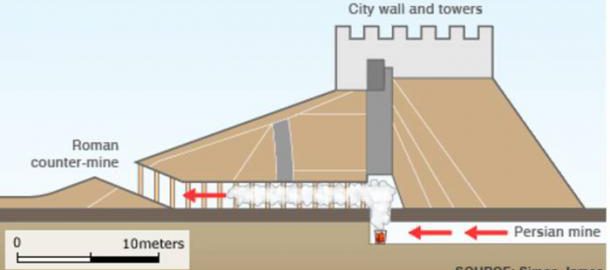Combat gases are associated primarily with the First World War and their terrible effectiveness. It was then that chemical weapons were used on a massive scale, but this method of fighting was not new at all. The ancients were so ingenious that they used chemical weapons on the battlefield as early as the 3rd century CE.
The source of the information is the archaeologist Simon James, of the University of Leicester. He claims that during the conquest of the city of Dura Europos (today’s Syria), the Persian troops attacked the ancient Romans in this way.
The Persians bored a tunnel under the city; so did the defenders. It was there, in the labyrinth under the walls, that archaeologists discovered the remains of the warriors. The scientist examined the remains of about 20 bodies and concluded that the Persians used a new lethal weapon. In the tunnels, they set fire to bitumen together with sulfur crystals, and the vapours of this poisonous mixture reached the Roman side. Interestingly, the diagram of the Persian tunnel and the location of the chemical weapons indicates that the shape of the dug passage was not accidental. It was supposed to favour killing underground.
The Romans, due to the poisonous smoke, lost consciousness within a few seconds, and after a few minutes, they were already dead. A careful analysis of the distribution of the bodies near the entrance to the narrow trench indicates that the soldiers were attacked at the mouth of the Persian tunnel, and the Persians built an obstacle from the pile of their bodies and shields to protect them from a Roman counterattack.
Simon James believes that by using the new weapon, the Persians did what would be considered a miracle in conventional combat. Dura Europos was captured by the Persians with the help of war gases in 256 CE. It was more than sixteen centuries earlier than the chlorine attack carried out by the German army in April 1915 (near Ypres), considered the first such effective demonstration of the power of combat gases (350 Allied soldiers were killed by it).







